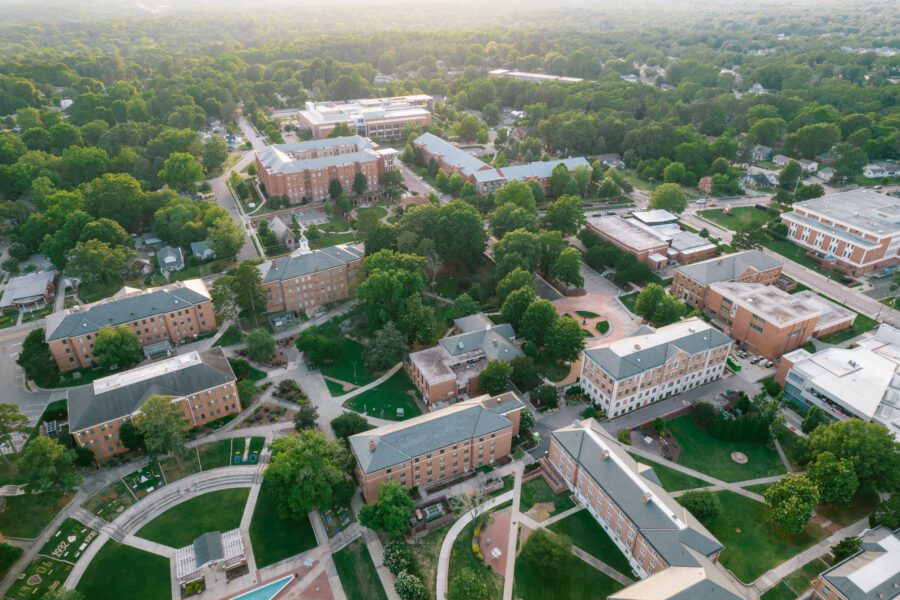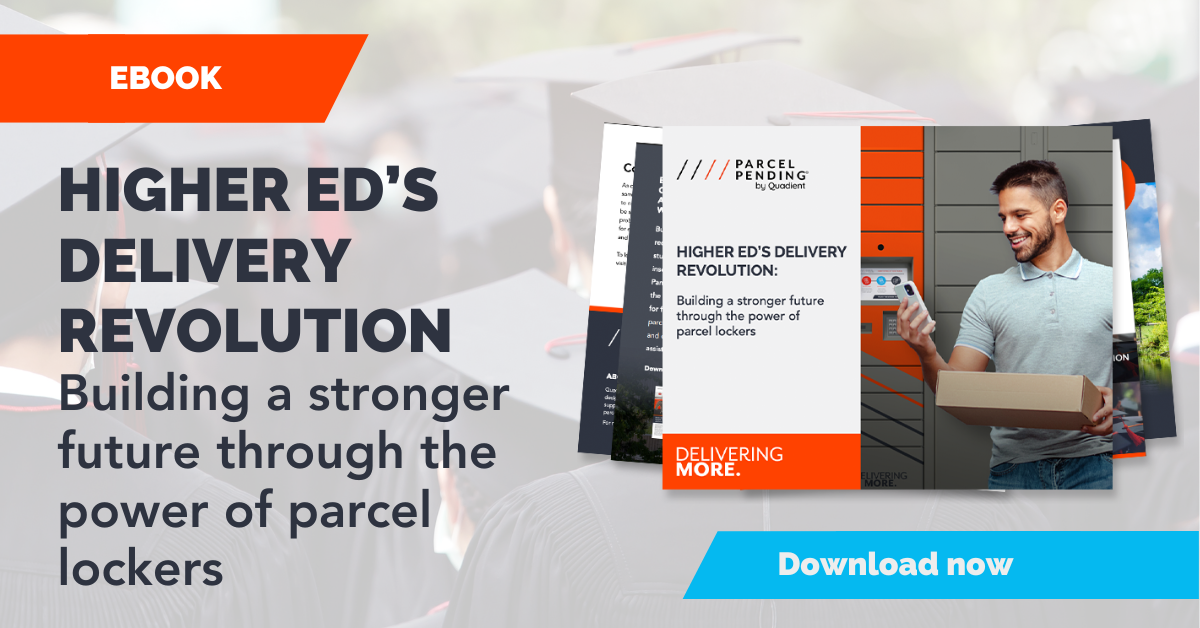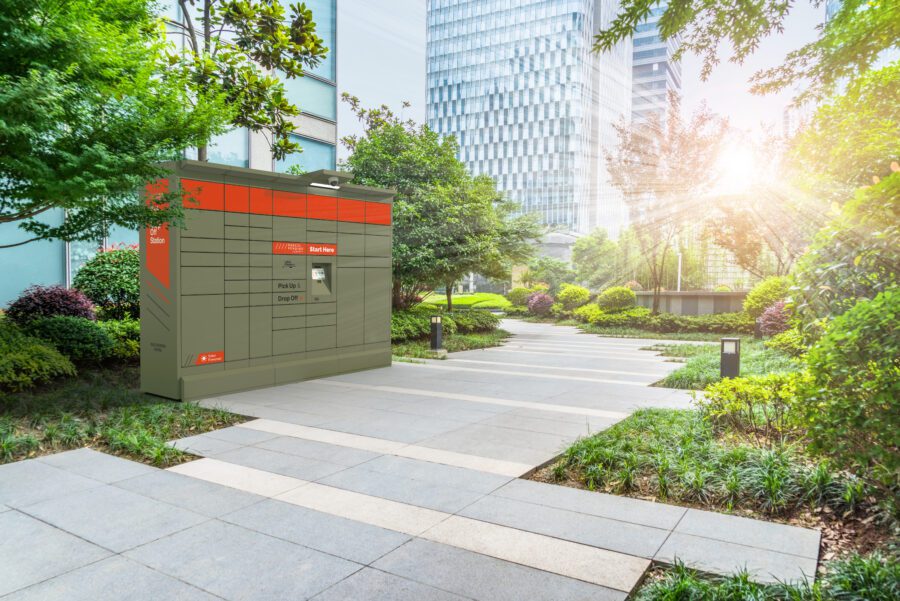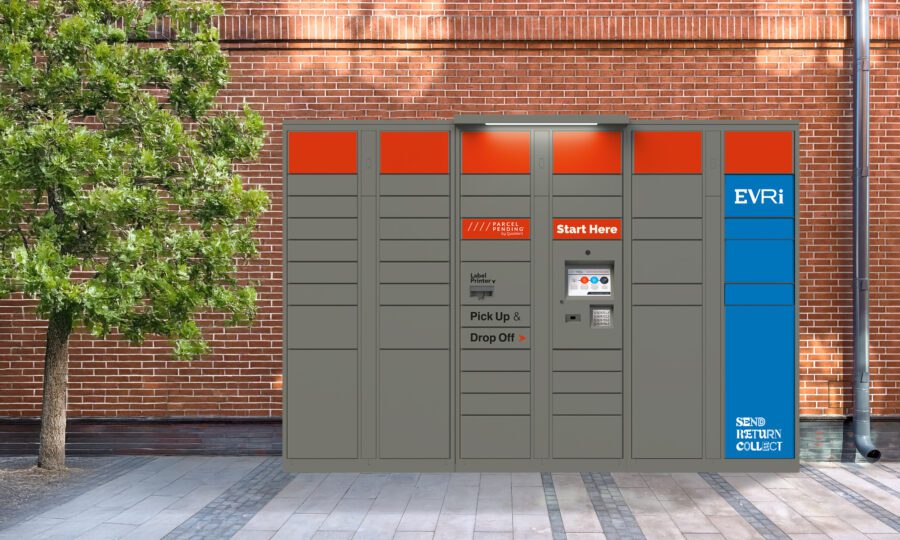
Our Blog
How to Deliver MORE to Your Campus with the Power of Parcel Lockers
Written by: Parcel Pending
4 Min Read
Published: July 7, 2025
Global e-commerce continues to surge, with sales projected to reach $6.4 trillion in 2025, accounting for roughly 20.5% of all retail transactions worldwide. In the first quarter alone, the U.S. Department of Commerce reported $1,858.5 billion in sales, marking a 0.4% increase from the previous quarter.
Within this growing landscape, college students represent a major consumer segment. As higher education enrollment is expected to reach 594 million students globally by 2040, the volume of on-campus deliveries is only set to increase.
To keep pace with this rising demand, colleges and universities must rethink how they manage incoming packages. In the sections below, we’ll examine the core challenges that campuses face and explore smart, scalable solutions that can improve efficiency, reduce frustration, and enhance the student experience.
The challenges posed by surging on-campus deliveries
The surge in e-commerce deliveries has put a strain on traditional campus mailrooms, underscoring the need for more efficient ways to manage the growing volume of packages. This influx affects everyone involved — overwhelmed mailroom staff, students, and faculty left waiting for important deliveries.
To manage the flow, many universities have implemented set pickup hours at central mailroom locations. However, these schedules are typically designed around staff availability, not the daily routines of students, who may be in class, studying, or attending other commitments. For those living on large campuses, getting to the mailroom often requires extra effort and planning. And when they do arrive during limited hours, they’re frequently met with long lines and shared frustration from others hoping to grab their packages and go.
How to effectively streamline campus deliveries
To address the growing volume of on-campus deliveries, many universities are turning to smart parcel lockers. These systems offer a cost-effective, streamlined solution that improves organization and enhances convenience for both students and staff. With 24/7 self-service pickup and built-in tracking, smart lockers provide full visibility throughout the delivery process. Automated notifications let recipients know the moment their package is ready, eliminating the need to visit during limited mailroom hours.
In addition to standard parcel lockers, campuses can benefit from rear-loading lockers, which are ideal for legacy mailroom layouts or areas with limited space. These lockers are designed to integrate seamlessly into existing infrastructure while maximizing efficiency.
Innovation extends beyond traditional package delivery with Campus Hub
To keep pace with growing delivery demands, managing the flow of goods across campus has become a highly coordinated, campus-wide effort. Departments such as student housing, IT, campus food pantries, the library, and dining services all rely on efficient and reliable systems to distribute, track, and receive packages and materials.
That’s where Campus Hub™ comes in. Purpose-built for modern colleges and universities, Campus Hub is a smart, integrated distribution solution that transforms how goods move across campus. Using intelligent lockers as secure exchange points, it streamlines campus logistics through a centralized, tech-enabled platform.
At its core, Campus Hub combines Parcel Pending by Quadient’s smart lockers with either Quadient’s Web Tracking System (WTS) or an institution’s existing software. This integration ensures a complete chain of custody for every item, whether delivered, received, or transferred.
By automating and unifying campus logistics, Campus Hub helps schools address two significant challenges: doing more with fewer staff and unlocking new revenue opportunities through value-added services.
Unique features of Campus Hub include:
- Complete chain of custody for all items delivered or received on campus, including items that cannot be delivered directly to a locker
- Ability to use lockers for both pick-ups and returns of parcels and other assets
- Mail distribution on the same communication platform
- The ability for the locker system to talk to other software already on campus, enabling different departments to easily leverage it: Library, bookstore, IT department, cafeteria, dining hall, and more
- Maintain the same collection and returns process for students and staff regardless of use case, making user adoption easy and seamless
Choose the best partner to deliver MORE to your campus
Parcel Pending by Quadient lockers are the best solution for efficiently managing the growing influx of on-campus deliveries while helping to create a modern campus distribution experience. By choosing Parcel Pending, your university or college campus gains:
- MORE Efficiency: Streamline package delivery to minimize the time and resources needed for staff management.
- MORE Automation: Automatic notification system for instant alerts when packages are ready for pickup, removing the need for manual tracking.
- MORE Security: Our lockers feature state-of-the-art security measures, including individual access codes and real-time monitoring, which eliminates the risk of loss, theft, or damage, as packages are no longer left unattended.
- Enhanced Student Experiences: Improve the student experience with 24/7 package retrieval, eliminating long lines and providing access outside of traditional mailroom hours.
Campus delivery made simple
As competition for students becomes more intense, some things will move from amenities to necessities. Institutions that adapt will not be subject to the fads of the day but will solve problems, provide value, and increase satisfaction for everyone in the chain of custody, from delivery to collection to everything in between.
Contact us today to learn more
Click the image below to download our eBook “Higher Ed’s Delivery Revolution: Building a stronger future through the power of parcel lockers” and gain more insights into the power of parcel lockers in higher education.




